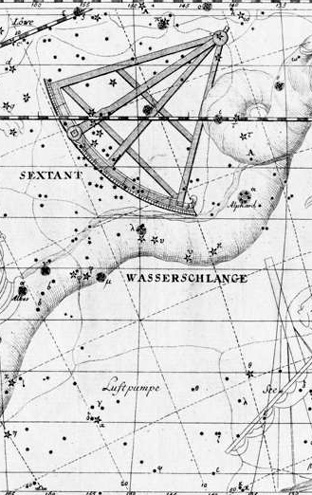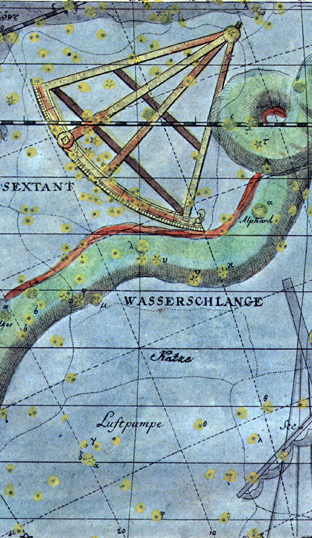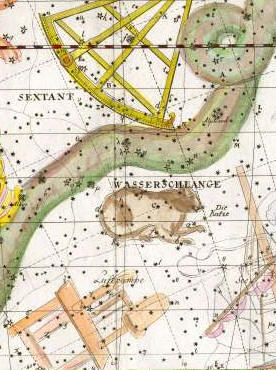|
Testo in preparazione
J. E. Bode
Vorstellung der gestirne, Berlino 1782
La tavola del Toro in Flamsteed, Fortin, Bode, Jamieson e la scoperta di Urano
Differenze tra le due edizione del 1782 La seconda edizione porta nel frontespizio la data del 1782 ma fu stampata probabilmente molti anni dopo visto che comprende costellazioni ideate da altri astronomi in anni successivi, come ad esempio il Pallone Aerostatico ideato da Lalande nel 1798. Le tavole a colori che la compongono sono tratte da una edizione pubblicata nel 1973 a Dusseldorf da Treugesell-Verlag KG che presenta una copia di proprietÓ del Dr. Hans Vehrenberg e che porta il titolo di J. E. Bode's Sternatlas. Questa edizione Ŕ comunque precedente all'edizione del Vorstellung der Gestirne del 1805. Lo comprova la tavola dove viene riportata la costellazione del Katze che nella nostra viene soltanto nominata, mentre in quella del 1805 Ŕ disegnata. Sulla data dell'ideazione del Katze vedi il seguente articolo: Franz Xaver Freiherr von Zach:Allgemeine Geographische Ephemeridien,Die Katze ein neues Sternbild, Weimar 1799 http://www.atlascoelestis.com/Zach%201799%20base.htm
Prima e seconda edizione del 1782
Edizione del 1805
Confronta con Anleitung zur Kenntniss des Gestirnten Himmels Berlin 1788 Uranographia, Berlino 1801, colorato a mano
Bode was born in Hamburg. His first publication was on the solar eclipse, August 5, 1766. This was followed by an elementary treatise on astronomy entitled Anleitung zur Kenntniss des gestirnten Himmels, the success of which led to his being summoned to Berlin in 1772 for the purpose of computing ephemerides on an improved plan. In 1774, Bode started the well-known Astronomisches Jahrbuch, a journal which ran to 51 yearly volumes. Bode became director of the Berlin Observatory in 1786, where he remained until 1825. There he published the Uranographia in 1801, a celestial atlas that aimed both at scientific accuracy in showing the positions of stars and other astronomical objects, as well as the artistic interpretation of the stellar constellation figures. The Uranographia marks the climax of an epoch of artistic representation of the constellations. Later atlases showed fewer and fewer elaborate figures until they were no longer printed on such tables. Bode also published a small star atlas, intended for astronomical amateurs (Vorstellung der Gestirne). He is credited with the discovery of Bode's Galaxy (M81). Comet Bode (C/1779 A1) is named after him; its orbit was calculated by Erik Prosperin. From 1787 to 1825 Bode was director of the Astronomisches Rechen-Institut. In 1794, he was elected a foreign member of the Royal Swedish Academy of Sciences. In April, 1789 he was elected a fellow of the Royal Society. (Barry Lawrence Ruderman)
Per cortesia di Wikipedia leggi la voce
di FELICE STOPPA
|
Tavole
Confronta con i planisferi a proiezione polare equatoriale nell'edizione del 1805
http://www.atlascoelestis.com/Klingwall%201805.htm
|




















































